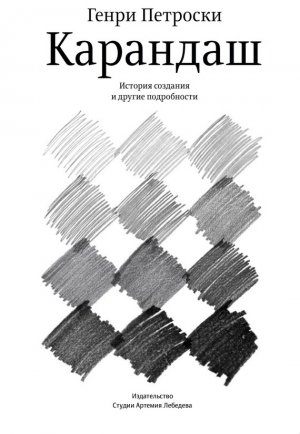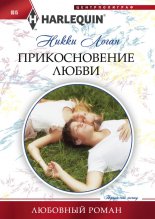Карандаш. История создания и другие подробности Петроски Генри

Marshall, J. D., and M. Davies-Shiel. The Industrial Archaeology of the Lake Counties. Newton Abbot, Devon., 1969.
Martin, Thomas. The Circle of the Mechanical Arts; Containing Practical Treatises on the Various Manual Arts, Trades, and Manufactures. London, 1813.
Masi, Frank T., editor. The Typewriter Legend. Secaucus, N.J., 1985.
Masterson, R. L. Dip Finishing Pencils and Penholders // Industrial Finishing. №4. Sept. 1928. P 59–60, 65.
McCloy, Shelby T. French Inventions of the Eighteenth Century. Lexington, Ky., 1952.
McClurg, A. C., & Co. General Catalogue. 1908–09.
McDuffie, Bruce. Rapid Screening of Pencil Paint for Lead by a Combustion-Atomic Absorption Technique // Analytical Chemistry. №44. July 1972. P. 1551.
McGrath, Dave. To Fill You In // Engineering News-Record. May 13, 1982. P. 9.
McNaughton, Malcolm. Graphite // Stevens Institute Indicator. №18. Jan. 1901. P. 1–15.
McWilliams, Peter A. The McWilliams II Word Processor Instruction Manual. West Hollywood, Calif., 1983.
Meder, Joseph. Mastery of Drawing. Vol. 1. Translated and revised by Winslow Ames. NY, 1978.
Meltzer, Milton, and Walter Harding. A Thoreau Profile. Concord, Mass., 1962.
Metz, Tim. Is Wooden Writing Soon to Be Replaced by a Plastic Variety? // Wall Street Journal. Jan. 5, 1981. P. 1, 6.
Mitchell, C. Ainsworth. Back-Lead Pencils and Their Pigments in Writing // Journal of the Society of Chemical Industry. №38. 1919. P. 383T–391T.
Mitchell, C. Ainsworth. Characteristics of Pigments in Early Pencil Writing // Nature. №105. Mar. 4, 1920. P. 12–14.
Mitchell, C. Ainsworth. Copying-Ink Pencils and the Examination of Their Pigments in Writing // The Analyst. №42. 1917. P. 3–11.
Mitchell, C. Ainsworth. Graphites and Other Pencil Pigments // The Analyst. №47. Sept. 1922. P. 379–387.
Mitchell, C. Ainsworth. Pencil Markings in the Bodleian Library // Nature. №109. Apr. 22, 1922. P. 516–517.
Montgomery, Charles F., editor. Joseph Moxon’s Mechanick Exercises: Or, the Doctrine of Handy Works, [etc.]. NY, 1970.
Morgan, Hal. Symbols of America. NY, 1986.
Moss, Marcia, editor. A Catalog of Thoreau’s Surveys in the Concord Free Public Library. Geneseo, N.Y., 1976.
Mumford, Lewis. The Myth of the Machine: Technics and Human Development. NY, 1967.
Mumford, Lewis. Technics and Civilization. NY, 1963.
Munroe, William. Francis Munroe // In Social Circle in Concord. Memoirs of Members. 3rd series. Cambridge, Mass., 1907.
Munroe, William, Jr. Memoirs of William Munroe // In Social Circle in Concord. Memoirs of Members. 2nd series. Cambridge, Mass., 1888.
Murry, J. Middleton. Pencillings. NY, 1925.
Nasmyth, James. James Nasmyth, Engineer: An Autobiography. Edited by Samuel Smiles. NY, 1883.
Nelms, Henning. Thinking with a Pencil. NY, 1985.
New Edinburgh Encyclopedia. 2nd American ed. NY, 1821.
Newlands, James. The Carpenter and Joiner’s Assistant, [etc.]. London, [ca. 1880].
The NY Times. Dixon Stands by Jersey City. Dec. 14, 1975. P. 14.
The NY Times. How Dixon Made Its Mark. Jan. 27, 1974. P. 74.
The NY Times. Mr. Eberhard Faber’s Death. The Man Who Built the First Lead Pencil Factory in America — A Sketch of His Career. Mar. 4, 1879. Obituary page.
Nichols, Charles R., Jr. The Manufacture of Wood-Cased Pencils // Mechanical Engineering, Nov. 1946. P. 956–960.
Noble, David F. America by Design: Science, Technology, and the Rise of Corporate Capitalism. NY, 1977.
Norman, Donald A. The Psychology of Everyday Things. NY, 1988.
Norton, Thomas H. The Chemistry of the Lead Pencil // Chemicals. №24. Aug. 31, 1925. P. 13.
Official Catalogue of the Great Exhibition of the Works of Industry of All Nations, 1851. Corrected ed. London, [1851].
Oliver, John W. History of American Technology. NY, 1956.
Oppenheimer, Frank. The German Drawing Instrument Industry: History and Sociological Background // Journal of Engineering Drawing. №20. Nov. 1956. P. 29–31.
Ormond, Leonee. Writing. London, 1981.
Pacey, Arnold. The Maze of Ingenuity: Ideas and Idealism in the Development of Technology. Cambridge, Mass., 1976.
Palatino, Giovambattista. The Tools of Handwriting: From … Un Nuovo Modo d’Imparare [1540]. Introduced, translated, and printed by A. S. Osley. Wormley, 1972.
The Pencil Collector. Various numbers.
Pentel of America, Limited. Pentel Brings an End to the Broken Lead Era with New «Super» Hi-Polymer Lead. [Sales catalogue insert.] Torrance, Ca., 1981.
Peterson, Eldridge. Mr. Berwald Absorbs Pencils // Printers’ Ink. №171. May 2, 1935. P. 21, 24–26.
Petroski, H. On the Fracture of Pencil Points // Journal of Applied Mechanics. №54. Sept. 1987. P. 730–733.
Petroski, H. Inventions Spurned: On Bridges and the Impact of Society on Technology // Impact of Science on Society. №37 (№147, 1987). P. 251–259.
Petroski, H. To Engineer Is Human: The Role of Failure in Successful Design. NY, 1985.
Pevsner, N. The Term «Architect» in the Middle Ages // Speculum. №17. 1942. P. 549–562.
Phillips, E. W. J. The Occurrence of Compression Wood in African Pencil Cedar // Empire Forestry Journal. №16. 1937. P. 54–57.
Pichirallo, Joe. Lead Poisoning: Risks for Pencil Chewers? // Science. №173. Aug. 6, 1971. P. 509–510.
Pigot and Company. London and Provincial New Commercial Directory, for 1827–28; Comprising a Classification of, and Alphabetical Reference to the Merchants, Manufacturers and Traders of the Metropolis, [etc.]. 3rd ed. London, [1827].
Pigot and Company. Metropolitan New Alphabetical Directory, for 1827; [etc.]. London, [1827].
Pinck, Dan. Paging Mr. Ross // Encounter. №69. June 1987. P. 5–11.
Pliny. Natural History. With an English translation by H. Rackham. Cambridge, Mass., 1979.
Plot, Rob. Some Observations Concerning the Substance Commonly Called, Black Lead // Philosophical Transactions (London). №20. 1698. P. 183.
Porter, Terry. The Pencil Revolution // Texas Instruments Engineering Journal. №2. Jan. — Feb. 1985. P. 66.
Pratt, Joseph Hyde. The Graphite Industry // Mining World. July 22, 1905. P. 64–66.
Pratt, Sir Roger. The Architecture of Sir Roger Pratt, [etc.]. Edited by R. T. Gunther. Oxford, 1928.
Pye, David. The Nature and Aesthetics of Design. London, 1978.
Rance, H. F., editor. Structure and Physical Properties of Paper. NY, 1982.
Reed, George H. The History and Making of the Lead Pencil // Popular Educator. №41. June 1924. P. 580–582.
Rees, Abraham. The Cyclopedia; or, Universal Dictionary of Arts, Sciences, and Literature. Philadelphia, n.d.
Rehman, M. A., and S. M. Ishaq. Indian Woods for Pencil Making // Indian Forest Research Leaflet. №66. 1945.
Rehman, M. A., and Jai Kishen. Chemical Staining of Deodar Pencil Slats // Indian Forester. №79. Sept. 1953. P. 512–513.
Rehman, M. A., and Jai Kishen. Treatment of Indian Timbers for Pencils and Hand Tools for Pencil Making // Indian Forest Leaflet. №126. 1952.
Rehman, M. A., and Jai Kishen. Deodar as Pencil Wood // Indian Forest Bulletin. №149. [ca. 1953].
Remington, Frank L. The Formidable Lead Pencil // Think. Nov. 1957. P. 24–26. [В сокращенном варианте: The Versatile Lead Pencil // Science Digest. №43. Apr. 1958. P. 38–41.]
Rennie, John. The Autobiography of Sir John Rennie, F.R.S., [etc.]. London, 1875.
Rexel Limited. Making Pens and Pencils: A Story of Tradition. [Illustrated folder.] Aylesbury, Bucks., n.d.
Richards, Gregory B. Bright Outlook for Writing Instruments // Office Products Dealer. June 1983. P. 40, 42, 44, 48.
Riddle, W. Lead Pencils // The Builder. Aug. 3, 1861. P. 537–538. [См. также: The Builder, July 27, 1861: 517.]
Rix, Bill. Pencil Technology // A paper prepared for a course taught by Professor Walter G. Vincenti, Stanford University, ca. 1978.
Robinson, Tho. An Essay Towards a Natural History of Westmorland and Cumberland, [etc.]. London, 1709.
Rocheleau, W. F. Great American Industries. Third Book: Manufactures. Chicago, 1908.
Roe, G. E. The Pencil // Journal of the Writing Equipment Society. №5. 1982. P. 12.
Rolt, L. T. C. The History of the History of Engineering // Transactions of the Newcomen Society, 42. 1969–70. P. 149–158.
Root, Marcus Aurelius. The Camera and the Pencil; or the Heliographic Art. [1864 ed.] Pawlet, Vt., 1971.
Rosenberg, Harold. Saul Steinberg. NY, 1978.
Rosenberg, N., and W. G. Vincenti. The Britannia Bridge: The Generation and Diffusion of Knowledge. Cambridge, Mass., 1978.
Ross, Stanley. Drafting Pencil — A Teaching Aid // Industrial Arts and Vocational Education. Feb. 1957. P. 52–53.
Russell and Erwin Manufacturing Company. Illustrated atalogue of American Hardware. 1865 ed. [Washington, D.C., 1980.]
Russo, Edward, and Seymour Dobuler. The Manufacture of Pencils // NY University Quadrangle. №13. May 1943. P. 14–15.
Sackett, H. S. Substitute Woods for Pencil Manufacture // American Lumberman. Jan. 27. 1912. P. 46.
Sandburg, Carl. The Complete Poems. Revised and expanded ed. NY, 1970.
Scherer, J. S. More than 55 % Replies // Printers’ Ink. №188. Aug. 11, 1939. P. 15–16.
Schodek, Daniel L. Landmarks in American Civil Engineering. Cambridge, Mass., 1987.
Schrodt, Philip. The Generic Word Processor // Byte. Apr. 1982. P. 32, 34, 36.
Schwanhausser, Eduard. Die Nrnberger Bleistiftindustrie von Ihren Ersten Anfngen bis zur Gegenwart. Greifswald, 1893.
Scribner’s Monthly. How Lead Pencils Are Made. April 1878. P. 801–10.
Sears, Roebuck and Company. Catalogue. Various original and reprinted ed.s.
Seeley, Sherwood B. Carbon (Natural Graphite) // In Encyclopedia of Chemical Technology, 4. 2nd ed. 1964. P. 304–55.
Seeley, Sherwood B. Manufacturing pencils // Mechanical Engineering. Nov. 1947. P. 686.
Silliman, Professor. Abstract of Experiments on the Fusion of Plumbago, Anthracite, and the Diamond // Edinburgh Philosophical Journal. №9. 1823. P. 179–83.
Singer, Charles, et al., editors. A History of Technology. Oxford, 1954–78.
Slocum, Jerry, and Jack Botermans. Puzzles Old and New: How to Make and Solve Them. Seattle, 1986.
Smiles, Samuel. Lives of the Engineers. Popular ed. London, 1904.
Smiles, Samuel. Selections from Lives of the Engineers: With an Account of Their Principal Works. Edited with an introduction by Thomas Parke Hughes. Cambridge, Mass., 1966.
Smith, Adam. An Inquiry into the Nature and Causes of the Wealth of Nations. Chicago, 1952.
Smith, Cyril Stanley. Metallurgical Footnotes to the History of Art // Proceedings of the American Philosophical Society, 116. 1972. P. 97–135.
Smithwick, R. Fitzgerald. How Our Pencils Are Made in Cumberland // Art-Journal. №18, n.s. 1866. P. 349–51.
Social Circle in Concord, [Mass.]. Memoirs of Members. 2nd series: From 1795 to 1840. Cambridge, Mass., 1888.
Social Circle in Concord, [Mass.]. Memoirs of Members. 3rd series: From 1840 to 1895. Cambridge, Mass., 1907.
Social Circle in Concord, [Mass.]. Memoirs of Members. 4th series: From 1895 to 1909. Cambridge, Mass., 1909.
Speter, Max. Wer Hat Zuerst Kautschuk als Radiergummi Verwendet? // GummiZeitung. №43. 1929. P. 2270–71.
Staedtler, J. S., [Company]. 275 Jahre Staedtler-stifte. Nuremberg, 1937.
Staedtler Mars. Design Group Catalog. Montville, N.J., [1982].
Staedtler Mars GmbH & Co. The History of Staedtler. Nuremberg, [1986].
Staedtler Mars GmbH & Co. Various catalogues and reports.
Stafford, Janice. An Avalanche of Pens, Pencils and Markers! // Western Office Dealer. Mar. 1984. P. 18–22.
Steel, Kurt. Prophet of the Independent Man // The Progressive. Sept. 24, 1945. P. 9.
Steinbeck, John. Journal of a Novel: The East of Eden Letters. NY, 1969.
Stephan, Theodore M. Lead-Pencil Manufacture in Germany // U. S. Department of State Consular Reports. Commerce, Manufactures, Etc., 51. 1896. P. 191–192.
Stern, Philip van Doren, editor. The Annotated Walden. NY, [1970].
Stowell, Robert F. A Thoreau Gazetteer, edited by William L. Howarth. Princeton, N.J., 1970.
Stuart, D. G. Listo Works Back from the User to Build Premium Market // Sales Management. Nov. 20, 1951. P. 74–78.
Sutton, F. Colin. Your Pencil Unmasked // Chemistry and Industry. №42. July 20, 1923. P. 710–711.
Svensen, Carl Lars, and William Ezra Street. Engineering Graphics. Princeton, N.J., 1962.
Sykes, M’Cready. The Obverse Side // Commerce and Finance. №14. Apr. 8, 1925. P. 652–653.
Talbot, William Henry Fox. The Pencil of Nature. NY, 1969.
Tallis’s History and Description of the Crystal Palace, and the Exhibition of the World’s Industry in 1851. [3 vol.] London, [ca. 1852].
Taylor, Archer. English Riddles from Oral Tradition. Berkeley, Calif., 1951.
Thayer, V. T. The Passing of the Recitation. Boston, 1928.
Thomson, Ruth. Making Pencils. London, 1987.
Thoreau, Henry David. The Correspondence. Edited by Walter Harding and Carl Bode. NY, 1958.
Thoreau, Henry David. Journal. Vols. 1 and 2. John C. Broderick, general editor. Princeton, N.J., 1981, 1984.
Thoreau, Henry David. A Week on the Concord and Merrimack Rivers. Walden, or Life in the Woods. The Maine Woods. Cape Cod. [In one volume.] NY, 1985.
Thoreau Society Bulletin. A Lead Pencil Diploma … №74. Winter 1961. P. 7–8.
Thoreau’s Pencils: An Unpublished Letter from Ralph Waldo Emerson to Caroline Sturgis, 19 May 1844. Cambridge, Mass., 1944.
Tichi, Cecelia. Shifting Gears: Technology, Literature, Culture in Modernist America. Chapel Hill, N.C., 1987.
Timmins, Samuel, editor. Birmingham and the Midland Hardware District. 1866 ed. NY, 1968.
Timoshenko, Stephen P. History of Strength of Materials: With a Brief Account of the History of Theory of Elasticity and Theory of Structures. 1953 ed. NY, 1983.
Todhunter, I., and K. Pearson. A History of the Theory of Elasticity and of the Strength of Materials from Galilei to Lord Kelvin. 1886 ed. NY, 1960.
Townes, Jane. Please, Some Respect for the Pencil // Specialty Advertising Business. Mar. 1983. P. 61–63.
Turnbull, H. W., editor. The Correspondence of Isaac Newton. Vol. 1: 1661–1675. Cambridge, 1959.
Turner, Gerard L’E. Scientific Toys // The British Journal for the History of Science. №20. 1987. P. 377–398.
Turner, Roland, and Steven L. Goulden, editors. Great Engineers and Pioneers in Technology. Vol 1: From Antiquity through the Industrial Revolution. NY, 1981.
Ullman, David G., Larry A. Stauffer, and Thomas G. Dietterich. Toward Expert CAD // Computers in Mechanical Engineering, Nov. — Dec. 1987. P. 56–70.
U.S. Bureau of Naval Personnel. Draftsman 3. Washington, D.C., 1955.
U.S. Centennial Commission. International Exhibition, 1876: Official Catalogue. Philadelphia, 1876.
U.S. Court of Customs. United States v. A. W. Faber, Inc. (№3105). Appeals Reports, 16 [ca. 1929]. P. 467–471.
U. S. Department of Agriculture. Seeking New Pencil Woods. Forest Service report, [ca. 1909].
U. S. Department of Commerce. Simplified Practice Recommendation R151–34 for Wood Cased Lead Pencils. Typescript attached to memorandum, from Bureau of Standards Division of Simplified Practice to Manufacturers et al., dated Sept. 28, 1934.
U. S. Department of Commerce. Bureau of the Census. Current Industrial Reports: Pens, Pencils, and Marking Devices (1986). [1987.]
U. S. Department of Labor. Economic Factors Bearing on the Establishment of Minimum Wages in the Pens and Pencils Manufacturing Industry. Report … prepared for Industry Committee №52. Nov. 1942.
U.S. Federal Trade Commission. Amended Trade Practice Rules for the Fountain Pen and Mechanical Pencil Industry. Promulgated Jan. 28, 1955.
U.S. General Services Administration. Federal Specification SS-P-166d: Pencils, Lead. 1961.
U.S. International Trade Commission. Summary of Trade and Tariff Information: Pens, Pencils, Leads, Crayons, and Chalk. 1983.
U.S. International Trade Commission. Supplement to Summary of Trade and Tariff Information: Writing Instruments. 1981.
U.S. Tariff Commission. Wood-Cased Lead Pencils. Report to the President under the Provisions of Section 3(e) ofthe National Industrial Recovery Act. With Appendix: Limitations of Imports. №. 91 (2nd series). 1935.
U.S. Tobacco Review. From Forests to Pencils. [1977.]
Urbanski, Al. Eberhard Faber // Sales and Marketing Management. Nov. 1986. P. 44–47.
Ure, Andrew. A Dictionary of Arts, Manufactures, and Mines; Containing a Clear Exposition of Their Principles and Practice. NY, 1853.
Usher, Abbott Payson. A History of Mechanical Inventions. NY, 1929.
V. & E. Manufacturing Company. Note on Drawing Instruments. Pasadena, Calif., 1950.
van der Zee, John. The Gate: The True Story of the Design and Construction of the Golden Gate Bridge. NY, 1986.
Vanuxem, Lardner. Experiments on Anthracite, Plumbago, &c. // Annals of Philosophy, 11. 1826. P. 104–111.
Veblen, Thorstein. The Engineers and the Price System. 1921 ed. NY, 1963.
Veblen, Thorstein. The Instinct of Workmanship: And the State of the Industrial Arts. NY, 1918.
Venus Pen & Pencil Corporation. How Venus — the World’s Finest Drawing Pencil — Is Made. [Illustrated folder.] N.d.
Venus Pen & Pencil Corporation. List of Questions Most Frequently Asked, With Answers. [Undated typescript.]
Venus Pen & Pencil Corporation. The Story of the Lead Pencil. [Undated typescript.]
Venus Pen & Pencil Corporation. Venus 100 Years. [Report. NY, 1961.]
Vincenti, Walter G. What Engineers Know and How They Know It: Historical Studies in the Nature and Sources of Engineering Knowledge. Baltimore, 1990.
Viollet-le-Duc, Eugne Emmanuel. Discourses on Architecture. Translated, with an introductory essay, by Henry van Brunt. Boston, 1875.
Viollet-le-Duc, Eugne Emmanuel. The Story of a House. Translated by George M. Towle. Boston, 1874.
Vitruvius. De Architectura (The Ten Books on Architecture). Translated by Morris Hicky Morgan. 1914 ed. NY, 1960.
Vivian, C. H. How Lead Pencils Are Made // Compressed Air Magazine. №48. Jan. 1943. P. 6925–6931.
Vogel, Robert M. Draughting the Steam Engine // Railroad History. №152. Spring 1985. P. 16–28.
Voice, Eric H. The History of the Manufacture of Pencils // Transactions of the Newcomen Society, 27. 1949–50 and 1950–51. P. 131–141.
Vossberg, Carl A. Photoelectric Gage Sorts Pencil Crayons // Electronics. July 1954. P. 150–152.
Wahl Company. Making Pens and Pencils // Factory and Industrial Management. Oct. 1929. P. 834–835.
Walker, C. Lester. Your Pencil Could Tell a Sharp Story // Nation’s Business. Mar. 1948. P. 54, 56, 58, 90–91.
Walker, Derek, [editor]. The Great Engineers: The Art of British Engineers 1837–1987. NY, 1987.
Walker, Dick. Elastomer = Eraser // Rubber World. №152. Apr. 1965. P. 83–84.
Walker, Jearl. The Amateur Scientist // Scientific American. Feb. 1979. P. 158, 160, 162–66. (См. также: Nov. 1979. P. 202–204.)
Walls, Nina de Angeli. Trade Catalogs in the Hagley Museum and Library. Wilmington, Del., 1987.
Watrous, James. The Craft of Old-Master Drawings. Madison, Wisc., 1957.
Watson, J. G. The Civils: The Story of the Institution of Civil Engineers. London, 1988.
Waugh, Evelyn. Brideshead Revisited: The Sacred and Profane Memories of Captain Charles Ryder. Boston, 1946.
Weaver, Gordon. Electric Oven Reduces Cost of Baking Pencil Leads // Electrical World. №78. Sept. 10, 1921. P. 514.
Whalley, Joyce Irene. English Handwriting, 1540–1853: An Illustrated Survey Based on Material in the National Art Gallery, Victoria and Albert Museum. London, 1969.
Whalley, Joyce Irene. Writing Implements and Accessories: From the Roman Stylus to the Typewriter. Detroit, 1975.
Wharton, Don. Things You Never Knew About Pencils // Saturday Evening Post. Dec. 5, 1953. P. 40–41, 156, 158–159.
White, Francis Sellon. A History of Inventions and Discoveries: Alphabetically Arranged. London, 1827.
White, Lynn, Jr. Medieval Religion and Technology: Collected Essays. Berkeley, Calif., 1978.
White, Lynn, Jr. Medieval Technology and Social Change. NY, 1966.
Whittock, N., et al. The Complete Book of Trades, or the Parents’ Guide and Youths’ Instructor, [etc.]. London, 1837.
Wicks, Hamilton S. The Utilization of Graphite // Scientific American. №40. Jan. 18, 1879. P. 1, 34.
Wilson, Richard Guy, Dianne H. Pilgrim, and Dickran Tashjian. The Machine Age in America, 1918–1941. NY, 1986.
Winokur, Jon. Writers on Writing. 2nd ed. Philadelphia, 1987.
Wolfe, John A. Mineral Resources: A World View. NY, 1984.
Wright, Paul Kenneth, and David Alan Bourne. Manufacturing Intelligence. Reading, Mass., 1988.
The Year-Book of Facts in Science and Art, [etc.]. London, разные годы, но особенно 1840-е.
Zilsel, Edgar. The Sociological Roots of Science // American Journal of Sociology. №47. Jan. 1942. P. 544–562.
Иллюстрации
Набросок левой или правой руки Леонардо да Винчи в зеркальном отражении. Из манускрипта Леонардо да Винчи «Атлантический кодекс».
Древнеримский penicillum, или кисточка-карандаш. Любезно предоставлено компанией «Берол Ю-эс-эй».
Молодая девушка из Помпей со стилосом и книжкой из навощенных табличек (pugillares). Национальный археологический музей Неаполя. Воспроизводится с разрешения Главного управления археологии провинций Неаполь и Казерта.






